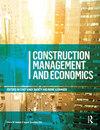Uncertainty network modeling method for construction risk management
IF 3.3
Q2 BUSINESS
引用次数: 0
Abstract
In recent decades, uncertainty management has increasingly elicited attention in construction management research due to increasing project complexity. However, existing management methods have not been able to solve the issues around risk and uncertainty, and regardless of the proposed network-based risk modeling approaches, there are insufficiencies in contemporary methods, such as their practical applicability. This study examined the current state and issues of uncertainty and risk management and proposed a novel uncertainty network model (UNM) as a solution. The uncertainty network model was designed and validated using design science methodology (DSM), drawing on literature and empirical data from interviews, questionnaires, case observations, and case testing. The UNM visually presents project risks, uncertainties, and their interconnections and criticality transforming project stakeholders’ tacit knowledge into an explicit, systematic representation of a project’s uncertainty and risk architecture. Applied to a real-world construction project, the model received positive feedback, demonstrating its effectiveness in enhancing practitioners’ understanding of networked risks and the potential to guide cost-effective risk-control activities by applying a systemic lens to project management. This practical validation showcases the model’s potential in addressing the shortcomings of existing methods and improving construction project risk management.工程风险管理中的不确定性网络建模方法
近几十年来,由于工程复杂性的不断增加,不确定性管理在施工管理研究中越来越受到关注。然而,现有的管理方法并不能解决风险和不确定性问题,并且无论提出基于网络的风险建模方法,当代方法都存在不足,例如其实用性。本文研究了不确定性和风险管理的现状和问题,并提出了一种新的不确定性网络模型(UNM)作为解决方案。不确定性网络模型采用设计科学方法论(DSM)设计和验证,利用文献和来自访谈、问卷调查、案例观察和案例测试的经验数据。UNM可视化地呈现项目风险、不确定性及其相互联系和重要性,将项目干系人的隐性知识转化为项目不确定性和风险架构的明确、系统的表示。应用于现实世界的建筑项目,该模型得到了积极的反馈,证明了它在增强从业者对网络风险的理解方面的有效性,以及通过将系统视角应用于项目管理来指导具有成本效益的风险控制活动的潜力。这一实际验证显示了该模型在解决现有方法的缺点和改进建筑项目风险管理方面的潜力。
本文章由计算机程序翻译,如有差异,请以英文原文为准。
求助全文
约1分钟内获得全文
求助全文
来源期刊

Construction Management and Economics
BUSINESS-
CiteScore
7.50
自引率
14.70%
发文量
58
期刊介绍:
Construction Management and Economics publishes high-quality original research concerning the management and economics of activity in the construction industry. Our concern is the production of the built environment. We seek to extend the concept of construction beyond on-site production to include a wide range of value-adding activities and involving coalitions of multiple actors, including clients and users, that evolve over time. We embrace the entire range of construction services provided by the architecture/engineering/construction sector, including design, procurement and through-life management. We welcome papers that demonstrate how the range of diverse academic and professional disciplines enable robust and novel theoretical, methodological and/or empirical insights into the world of construction. Ultimately, our aim is to inform and advance academic debates in the various disciplines that converge on the construction sector as a topic of research. While we expect papers to have strong theoretical positioning, we also seek contributions that offer critical, reflexive accounts on practice. Construction Management & Economics now publishes the following article types: -Research Papers -Notes - offering a comment on a previously published paper or report a new idea, empirical finding or approach. -Book Reviews -Letters - terse, scholarly comments on any aspect of interest to our readership. Commentaries -Obituaries - welcome in relation to significant figures in our field.
 求助内容:
求助内容: 应助结果提醒方式:
应助结果提醒方式:


